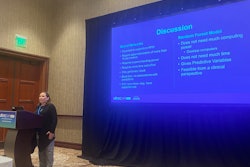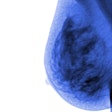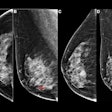Implementing a positive leadership program can decrease burnout and the intention to leave among breast imaging staff, a study published on May 14 in Radiology found.
Researchers led by Amy Young, PhD, from the University of Michigan in Ann Arbor also reported that their program led to improved perceptions of leaders' communication in terms of being more transparent, frequent, and consistent. Additionally, it led to more engagement among staff members.
"We believe our research advances our understanding of strategies to improve workplace climate given that so few studies on this topic exist," Young and colleagues wrote.
Burnout and employee turnover continue to be a burden on radiology departments, breast imaging included. Departments have attempted to mitigate burnout among their staff and lower turnover rates.
At the researchers' institution, the positive leadership program was implemented in three phases. First, imaging leaders were given a copy of "Positively Energizing Leadership," a practical guidebook for company leaders to use positive energy "generated by virtuous interactions with employees." From there, they attended a virtual workshop on applied learnings from their readings.
In the second phase, smaller groups of faculty and staff leaders attended PowerPoint presentations, with faculty members curating content for the presentations. The third phase consisted of daily mentoring, coaching, and modeling of positive leadership principles into the breast imaging unit.
For their prospective study, Young and co-authors identified the relationship between leadership behaviors and workplace climate and healthcare worker outcomes. They also studied whether the positive leadership program could improve workplace climate and healthcare worker outcomes. The researchers administered surveys before and after the program's implementation in 2021 and 2023, respectively.
The study included data from 88 respondents from the 2021 survey and 85 respondents from the 2023 survey.
The team used scales ranging from 1 to 7 points measuring participants' agreement and likelihood, with 7 indicating strong agreement and high likelihood. Additionally, it used a scale ranging from 1 to 5 points to measure burnout, with a 5 indicating complete burnout and a 1 indicating enjoyment at work. Perceptions improved among the participants between the two years since the program's implementation.
| Perceptions of leadership, burnout before and after program implementation (1 to 7 point scale) |
|||
|---|---|---|---|
| Measure |
Preimplementation |
Postimplementation |
p-value |
| Leadership communication |
4.59 |
5.80 |
< 0.001 |
| Workplace climate |
5.09 |
5.77 |
< 0.001 |
| Engagement |
5.27 |
5.68 |
< 0.01 |
| Burnout |
2.69 |
2.18 |
< 0.001 |
| Intent to leave |
3.12 |
2.56 |
< 0.05 |
The investigators also reported the following:
- Leadership communication was significantly tied to a positive workplace climate (β = 0.76, p < .001).
- A positive workplace climate was associated with improved engagement (β = 0.53, p < .001), a reduction in burnout (β = −0.42, p < .001), and a reduction in intent to leave (β = −0.49, p < .001).
The study authors highlighted that their study demonstrated a viable approach that can be used by healthcare units to partially address burnout.
In an accompanying editorial, James Thrall, MD, from Massachusetts General Hospital in Boston wrote that while there is no single solution to suit everyone's needs, the principles in the program described by Young et al are highly worthwhile building blocks for program design.
"They should be considered by anyone embarking on the quest to develop more effective leaders and to strengthen organizational resilience," Thrall wrote.
The full study can be found here.



















